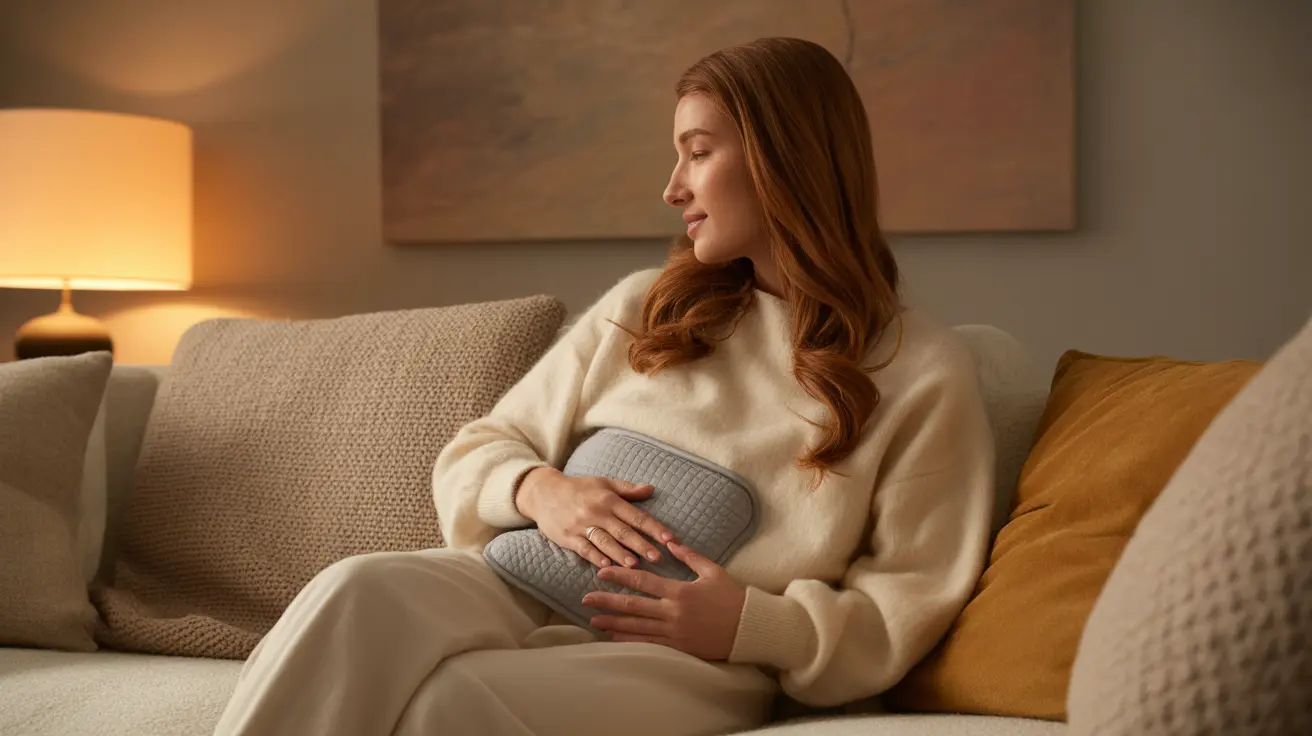Menstrual cramps affect millions of women worldwide, causing discomfort that can disrupt daily activities and significantly impact quality of life. While pharmaceutical options exist, many women seek natural, non-invasive methods to manage their period pain effectively.
Heat therapy, particularly through heating pads, has emerged as one of the most popular and accessible treatments for menstrual cramps. This time-tested approach offers immediate relief without the side effects associated with medications, making it an attractive option for women looking for safe, natural pain management solutions.
How Heat Therapy Works for Menstrual Pain
The application of heat to the lower abdomen or back during menstruation provides relief through several physiological mechanisms. When heat is applied to cramping muscles, it increases blood circulation to the affected area, helping to relax the uterine muscles that contract during menstruation.
Heat therapy works by blocking pain signals from reaching the brain, a process known as the gate control theory of pain. The warmth stimulates thermoreceptors in the skin, which compete with pain receptors for neural pathways, effectively reducing the perception of cramping pain.
Additionally, the increased blood flow from heat application helps deliver oxygen and nutrients to tense muscles while removing metabolic waste products that can contribute to muscle soreness and cramping. This enhanced circulation promotes faster healing and reduces inflammation in the affected tissues.
Benefits of Heating Pads Over Other Pain Relief Methods
Heating pads offer several advantages when compared to oral pain medications for menstrual cramp relief. Unlike nonsteroidal anti-inflammatory drugs (NSAIDs), heating pads produce no gastrointestinal side effects, kidney concerns, or interactions with other medications.
The convenience factor makes heating pads particularly appealing for many women. They can be used while working, studying, or relaxing at home, providing continuous relief without the need to remember dosing schedules or worry about medication timing.
Cost-effectiveness represents another significant benefit. While pain medications require ongoing purchases, a quality heating pad is a one-time investment that can provide years of reliable service. Electric heating pads, microwaveable heat packs, and even simple hot water bottles offer budget-friendly options for managing menstrual pain.
Proper Usage Guidelines and Duration
For optimal results when using a heating pad for cramps, temperature control and timing are crucial factors. The ideal temperature should feel comfortably warm without causing burns or excessive heat that could damage skin tissues.
Most heating pads should be used for 15 to 20-minute intervals, with breaks between applications to prevent overheating of the skin. This cycling approach allows tissues to benefit from the heat while preventing potential thermal injury.
Always place a thin barrier, such as a towel or clothing, between the heating pad and bare skin. This protective layer helps prevent burns while still allowing effective heat transfer to the underlying muscles.
Strategic Placement for Maximum Relief
The lower abdomen represents the primary target area for heating pad placement during menstrual cramps. Positioning the heating pad directly over the uterine area, approximately two to three inches below the belly button, provides direct relief to cramping muscles.
Lower back placement can be equally effective, particularly for women who experience radiating pain that extends from the uterus to the back muscles. The heat helps relax the supportive muscles in the lumbar region that often tense up during menstruation.
Some women find alternating between abdominal and back placement throughout their cycle provides the most comprehensive relief. This approach addresses both primary uterine cramping and secondary muscle tension that develops in response to pain.
Safety Considerations and Precautions
While generally safe, heating pad use requires awareness of potential risks and proper precautionary measures. Prolonged exposure to heat can cause burns, particularly on sensitive abdominal skin, so strict adherence to recommended usage times is essential.
Individuals with certain medical conditions should exercise caution when using heating pads. Those with diabetes, circulation problems, or conditions that affect temperature sensation should consult healthcare providers before beginning heat therapy regimens.
Never sleep with an electric heating pad turned on, as this significantly increases burn risk. If overnight pain relief is needed, consider using heat patches designed for extended wear or microwaveable pads that cool naturally over time.
Alternative Heat Therapy Options
Beyond traditional electric heating pads, several alternative heat therapy methods can provide effective cramp relief. Disposable heat patches offer portability and discretion, making them ideal for use at work or during travel.
Warm baths represent another excellent heat therapy option, providing full-body relaxation while targeting menstrual pain. Adding Epsom salts can enhance the therapeutic benefits through muscle-relaxing magnesium absorption.
Hot water bottles provide a cost-effective, electricity-free option that many women find equally effective as electric heating pads. These versatile tools can be easily transported and don't require power sources for operation.
When to Seek Medical Attention
While heating pads effectively manage typical menstrual cramps for most women, certain situations warrant professional medical evaluation. Severe pain that doesn't respond to heat therapy or over-the-counter medications may indicate underlying conditions requiring treatment.
Changes in menstrual patterns, including significantly increased pain, irregular cycles, or unusual symptoms accompanying cramps, should prompt consultation with healthcare providers to rule out conditions like endometriosis or fibroids.
Frequently Asked Questions
How does a heating pad help relieve menstrual cramps?
A heating pad relieves menstrual cramps by increasing blood flow to the uterine area, which helps relax contracting muscles. The heat also blocks pain signals from reaching the brain through the gate control theory, while improved circulation delivers oxygen and removes waste products that contribute to muscle pain and inflammation.
Is a heating pad better than painkillers for period cramps?
Heating pads offer several advantages over painkillers, including no side effects, no drug interactions, and continuous relief without dosing schedules. However, the effectiveness varies by individual. Many women find heating pads equally effective as medications, while others may need to combine both approaches or find medications more effective for severe cramps.
How long should I use a heating pad for cramps?
Use a heating pad for 15 to 20 minutes at a time, then take a break to prevent overheating or burns. You can repeat this cycle throughout the day as needed. Always place a thin barrier between the pad and your skin, and never sleep with an electric heating pad turned on.
Can I use a heating pad on my lower back for period pain?
Yes, using a heating pad on your lower back can be very effective for period pain. Many women experience radiating cramps that extend to the back muscles, and applying heat to the lumbar region helps relax these supportive muscles. You can alternate between abdominal and back placement for comprehensive relief.
Are there any risks or side effects of using a heating pad for cramps?
The main risks include burns from excessive heat or prolonged use, and skin irritation from direct contact. To minimize risks, use moderate temperatures, limit sessions to 15-20 minutes, and always use a barrier between the pad and skin. People with diabetes, circulation problems, or reduced temperature sensation should consult their doctor before using heating pads.




